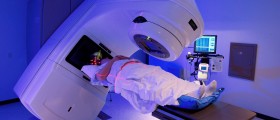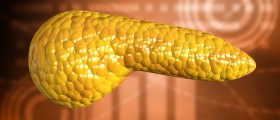
The pancreas is the vital gland located in the abdomen. It has many functions and synthesizes different hormones and enzymes. Similarly to any other organ in the body the pancreas can be affected by both benign and malignant tumors. Unlike pancreatic cancer, a severe disease that rapidly progresses and cannot be cured, benign tumors are easily dealt with and cause no harm to people.
Benign tumors are most commonly cystic in nature. They contain fluid produced by the lining of the tumor. Some of benign tumors may progress into pancreatic cancer. Therefore, it is essential for all of them to be diagnosed on time and surgically removed.
It is estimated that cystic tumors of the pancreas account for 2% of all pancreatic tumors. They include mucinous cystadenoma, serous cystadenoma and mucinous ductal ectasia.
Pancreatic Mucinous Cystadenoma
This is the most common cystic tumor of the pancreas. It accounts around 50% of all cystic tumors of the organ. Pancreatic mucinous cystadenoma is basically a benign tumor. However, it carries potential to progress into pancreatic cancer. Because of that it is essential to be removed as soon as it is diagnosed. Surgeon chooses the most convenient surgical approach depending on the very location of the tumor. There are several techniques and the goal is to preserve as much pancreas as possible.
Diagnosis of pancreatic mucinous cystadenoma can be made thanks to typical characteristics described after CT scan is performed. Definitive confirmation is achieved after surgical resection and pathohistolocigal examination of the tumor.
Pancreatic Serous Cystadenoma
Pancreatic serous cystadenoma (microcystic adenoma) is the second most common pancreatic cystic tumor. This tumor, similarly to mucinous cystadenoma, has a specific appearance on CT scan and, therefore, can be easily diagnosed even before its pathological examination. This is a benign tumor which rarely (almost never) progresses into invasive pancreatic cancer. Since there is actually no risk for the tumor to progress into pancreatic cancer, patients suffering from serous cystadenoma are monitored and surgical removal is indicated only in patients who have clinical symptoms associated with the tumor.
Mucinous Ductal Ectasia
Mucinous ductal ectasia originates from the lining of the pancreas. It is a pancreatic exocrine tumor. Its cells produce large amounts of thick mucus and its accumulation is associated with repeated pancreatitis. This tumor generally affects older men and is associated with heavy smoking.
The tumor is diagnosed during ERCP which visualizes an enlarged opening of the pancreatic duct into the ampulla vater with mucus ejected from the ampulla.
Mucinous ductal ectasia does not grow rapidly and this is why many doctors recommend conservative treatment. Still, some doctors recommend surgical removal of the tumor, particularly if it leads to frequent inflammation of the pancreas.

















Your thoughts on this
Loading...